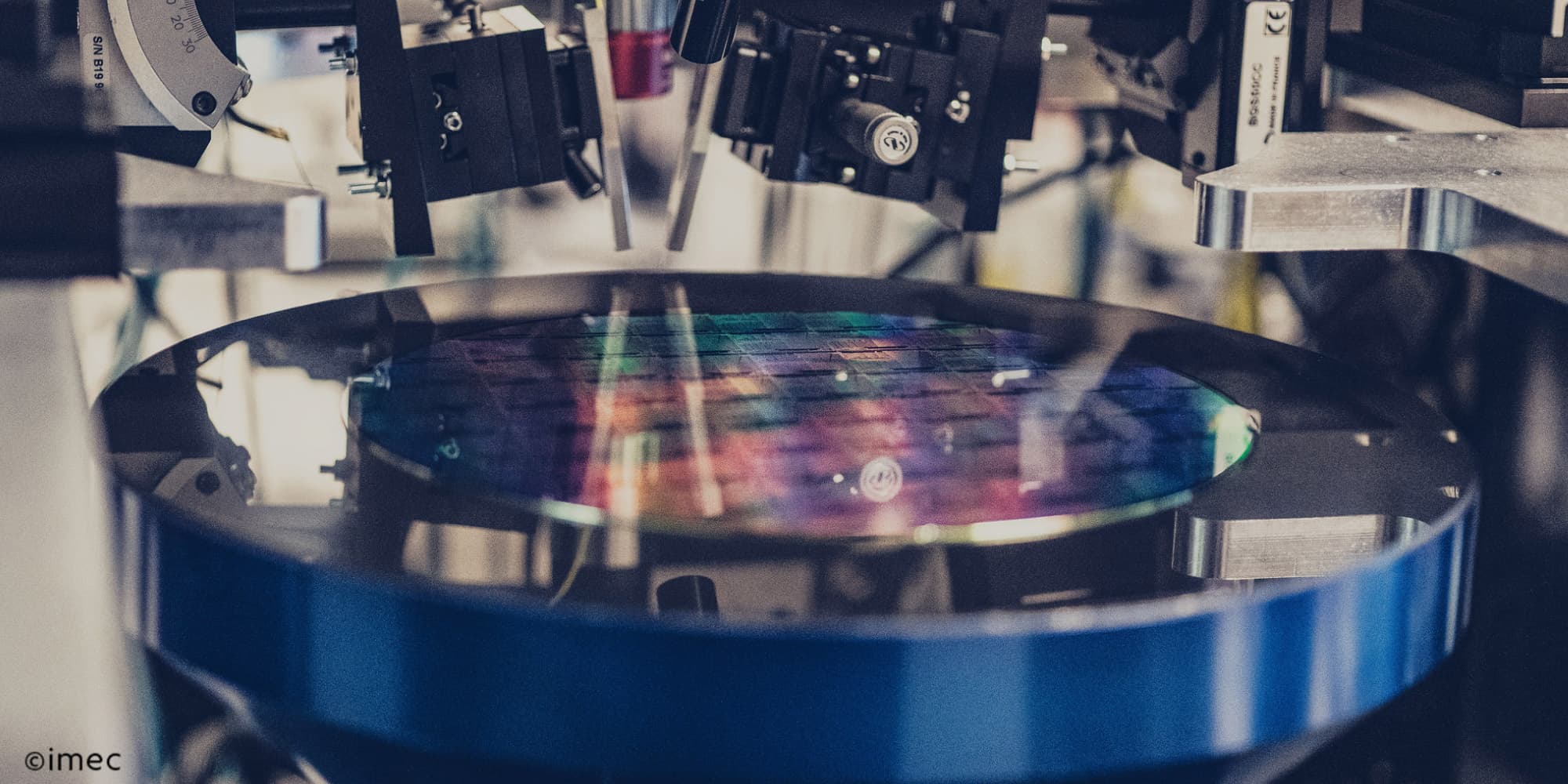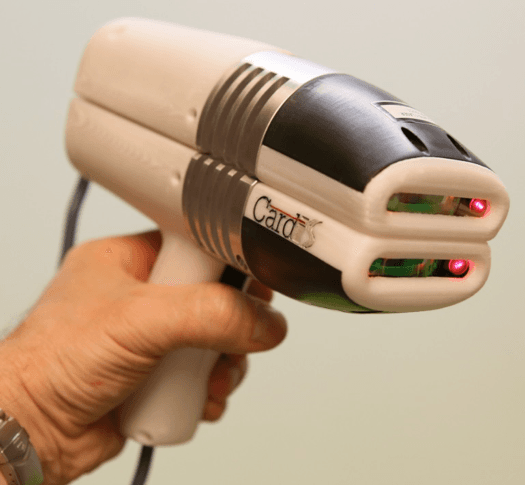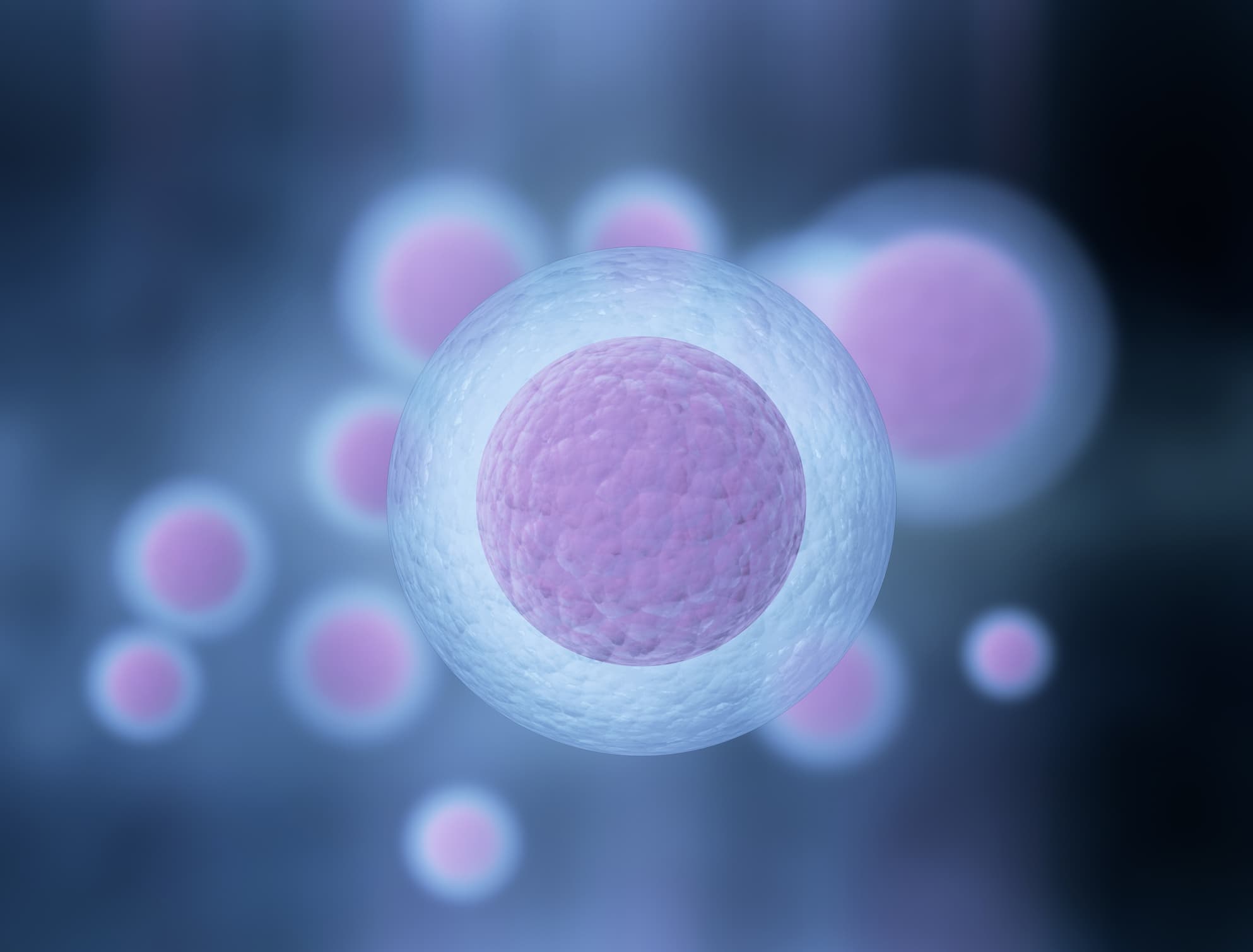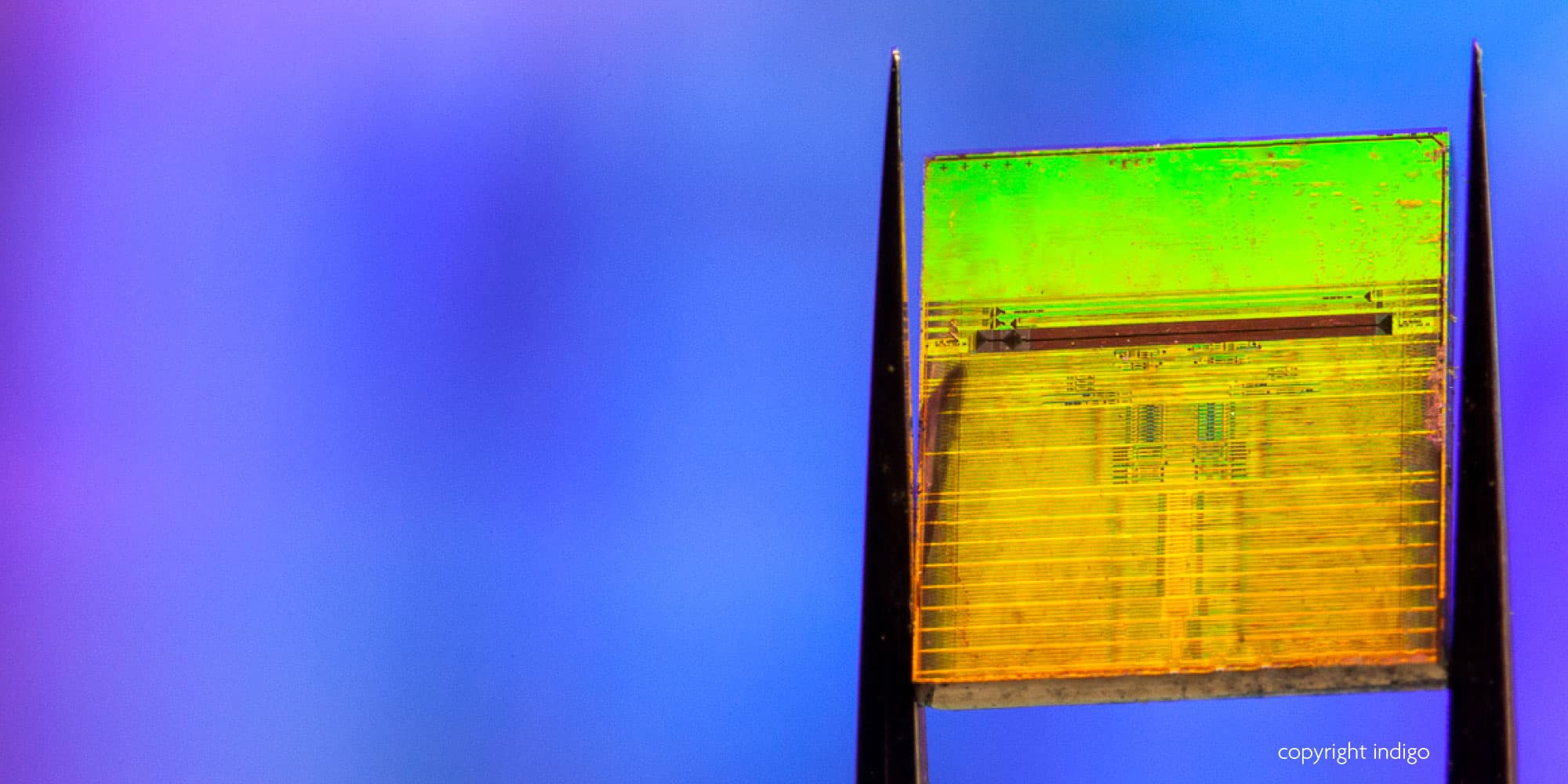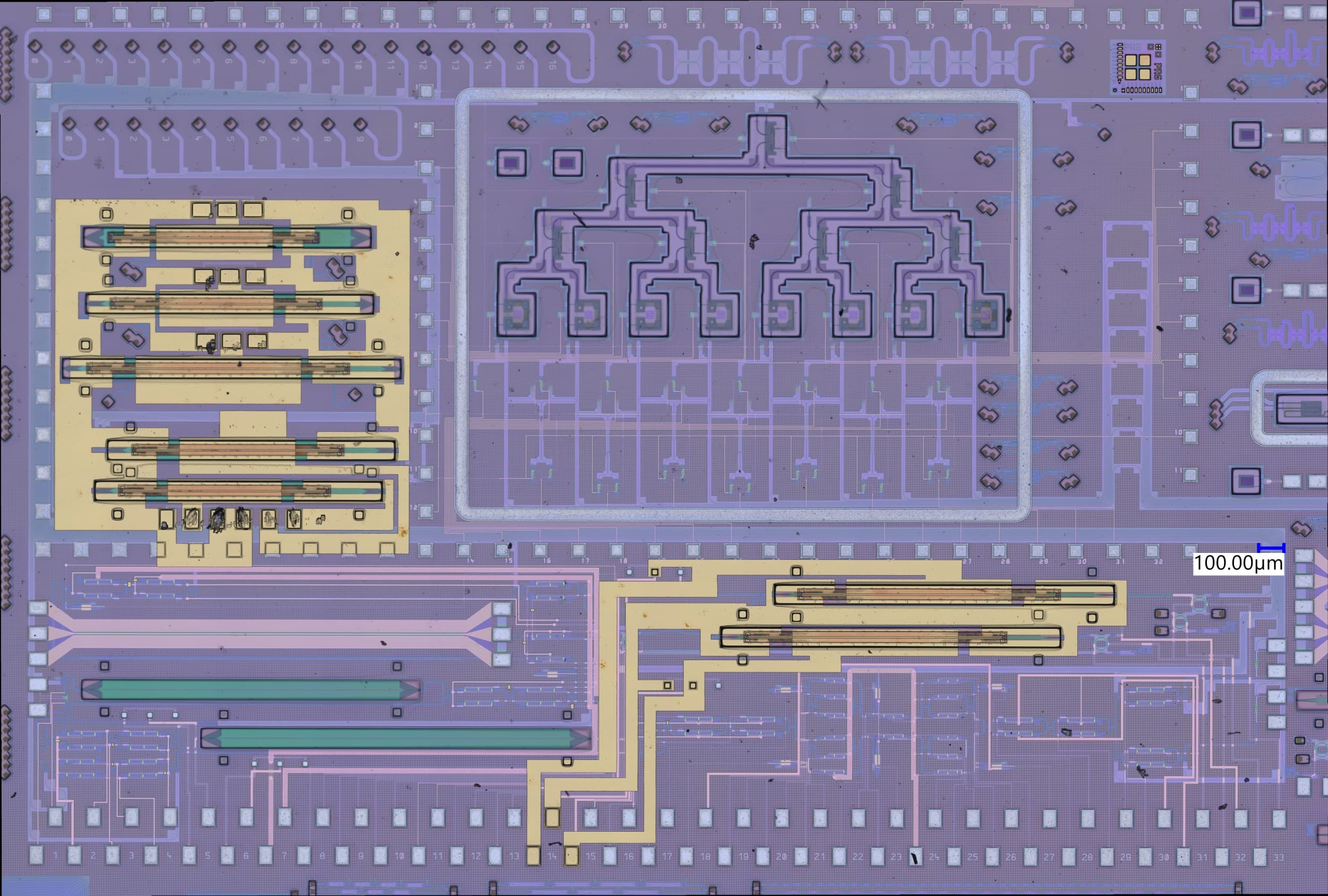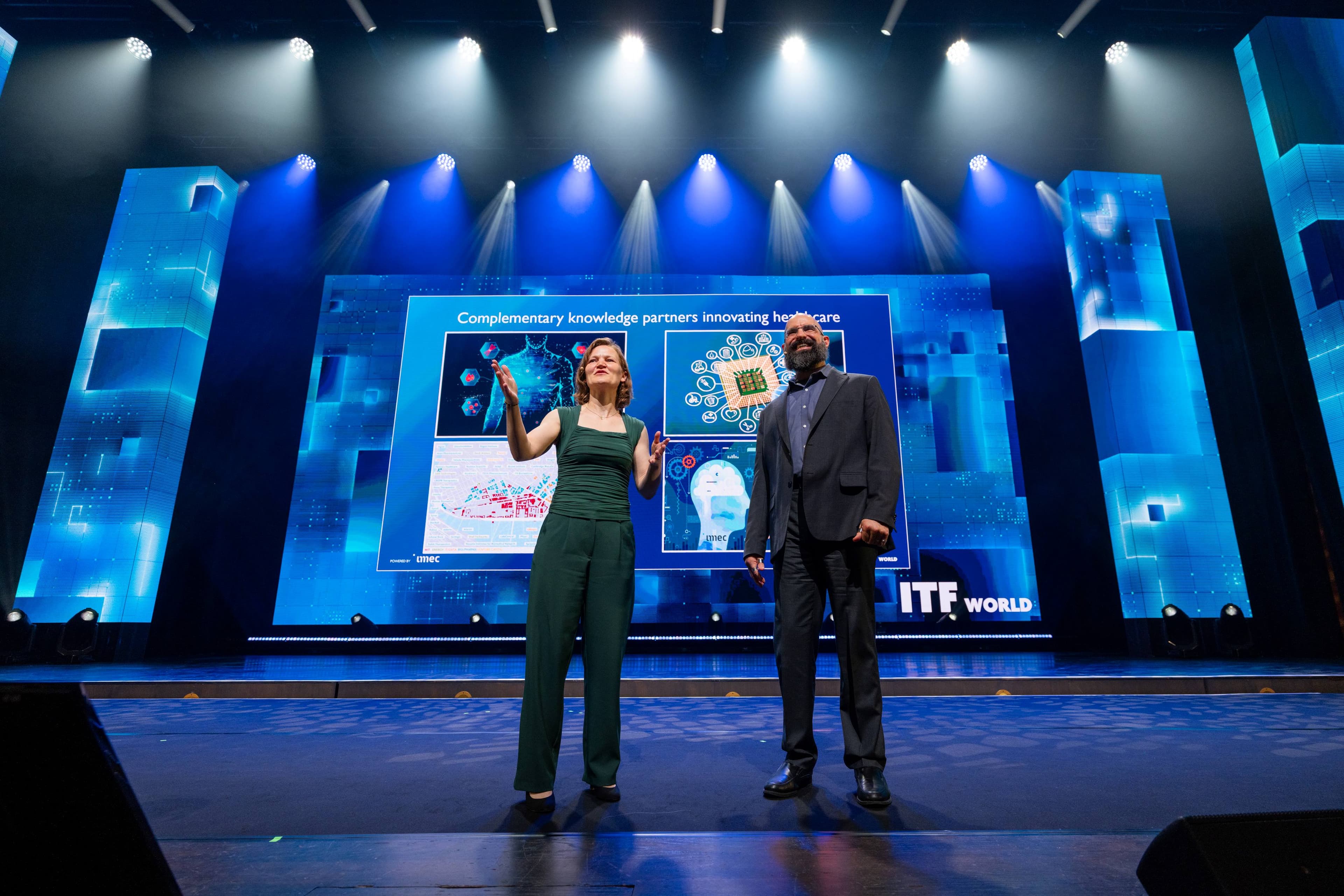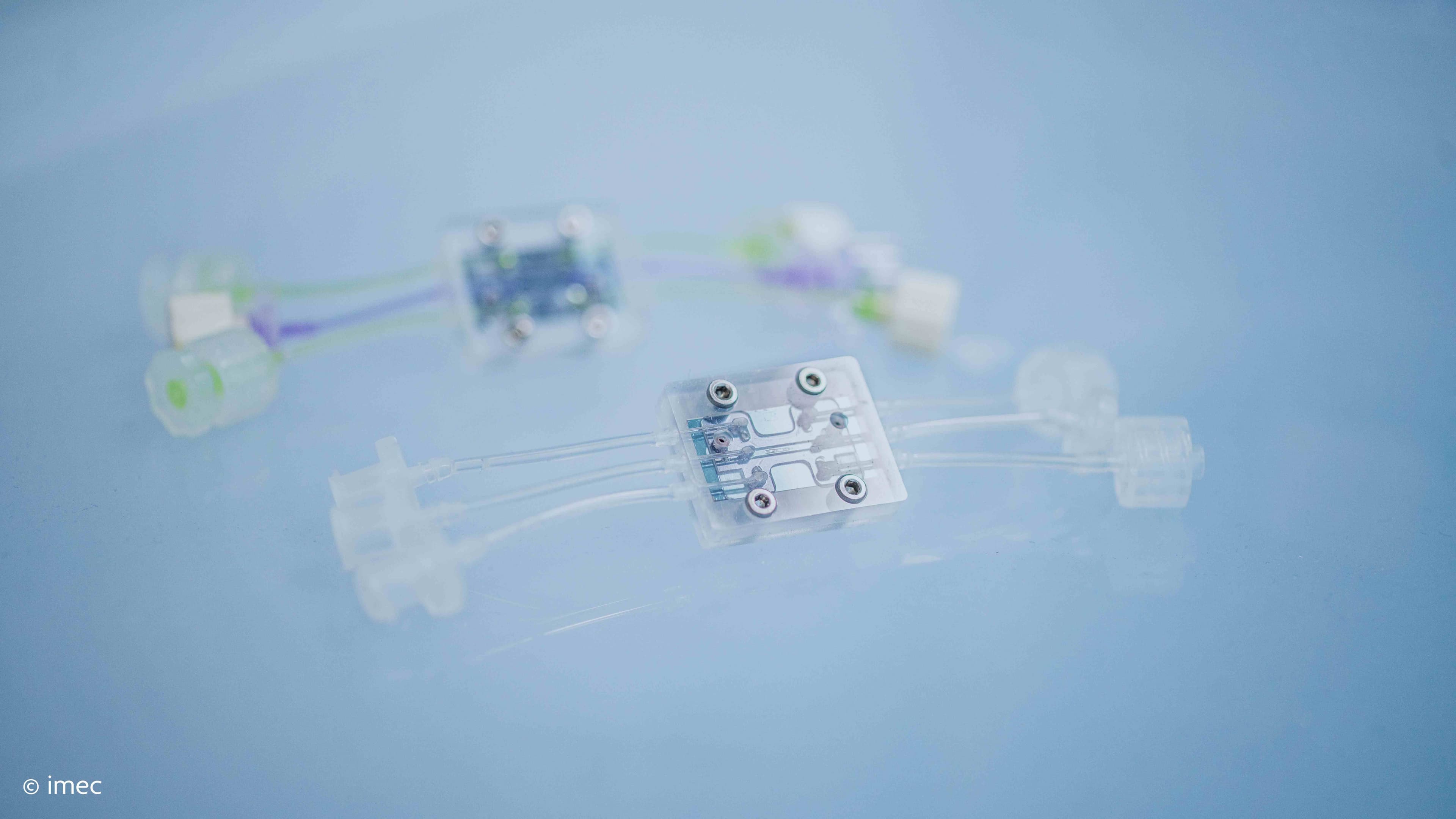The power of photonics
Photonic circuits use light as a ‘moving particle’, just as ordinary electronic circuits and chips use electrons. Light offers a great many advantages in terms of speed and performance – simply ask the datacenters that are already busy using photonic circuits and components for transmitting data more quickly from one data rack to another. Manufacturers of the latest generations of microprocessors and memory chips also use photonics to make their solutions more powerful.
Subject to making a small adjustment in the technology, photonics can also mean a great deal for the life science industry. In practical terms, it may mean making all devices that use light (microscopes, cytometers, DNA-sequencers, etc.) much more compact and cheaper to produce.

Hilde Jans, researcher at imec, tells us how the European PIX4life project is developing and refining biophotonics, making it accessible for innovative life science companies and start-ups.
For everything that has to do with light
In the life science industry, many devices are based on the use of light. These include microscopes, cytometers and DNA-sequencers, which use light to identify cells and DNA (based on fluorescent labels, for example). In these devices, relatively large optical components such as lasers and rectifiers are used. This has several disadvantages: (1) it requires a great deal of time and effort to put together the optical components into a system and align them perfectly with one another. As a result, these devices are relatively large and expensive; (2) the bulk-based optical systems may exhibit thermal and mechanical instabilities; (3) there is a high maintenance cost associated with it due to periodic alignment and calibration.
But biophotonics makes it possible to produce mini-versions of components such as lasers, waveguides, modulators, photodetectors, filters, ring resonators and so on. And if you integrate all of these photonic components in a single chip, you get a mini-system that often also works a lot faster than its larger counterpart. And because photonic components, just like chips, are produced on wafers (i.e. silicon discs with a diameter of 200 or 300mm), hundreds at the same time, it also makes them relatively inexpensive.
Up until now, biophotonics on a small scale has been used mainly in labs and research centers. The technology is not yet available as a large-scale, affordable, user-friendly platform. This is a situation that PIX4life intends to change.
Example of a multi-project wafer with photonic components.
First photonics pilot line, specifically for life science applications
For datacenters, a photonic technology is used based on silicon-on-isolator (SOI) material. SOI-based components use light with a wavelength greater than 1000nm. However, for life science applications, the technology needs to be adjusted. That’s because life science has to work (among others) with visible light (wavelength between 400 and 1000 nm). This can be achieved by using silicon nitride (SiN) as the base material, instead of SOI.
"PIX4life is a European project that runs for 4 years. Fifteen research partners and companies are working on the project to set up a unique pilot line for SiN photonic components and circuits. This pilot line will produce high-performance and reliable components of high quality on a large scale. These components can then be incorporated by life science companies into their products. "
The technology is affordable for users of the pilot line, because it works with multi-project wafers (MPWs). It also means that companies that only need small volumes will still be able to obtain a good price, offering them the opportunity to test their initial prototypes at a reasonable cost. The MPWs are divided across various ‘projects’ for different companies. Imec – and more specifically IC-Link – has already built up a great deal of experience with this concept. In addition to the MPW offering, the PIX4life project will also provide complementary services to future customers, such as consultancy, the design of photonic circuits, chip testing and assembly.
Three sample cases
Now, after 18 months, the PIX4life pilot line is ready to handle practical requests from biotech companies that want to test photonics. But what type of applications can photonic technology be used for? The products on which three of the consortium partners are working give us a good idea:
- Medlumics: an OCT-on-chip for ophthalmologists
Optical coherence tomography (OCT) is a technology typically used by ophthalmologists to both diagnose and guide different treatments in the eye. 2D and 3D cross-sections of the retina and optic nerve are produced using light waves. Scans are created by means of interferometric patterns of the light being backscattered by the sample and a reference path. These scans make it possible to calculate the thickness and composition of the tissue down to the sub-micron scale.
Medlumics is a partner in the PIX4life project. It aims to use the SiN photonic pilot line to produce an OCT-on-chip system operating in the near infrared, thus paving the way towards compact and cost-effective medical devices to be used in the daily practice, for example by ophthalmologists. The company’s current OCT systems are based on SOI technology and use light at larger wavelengths. This is perfect for its use, among others, in cardiology, gastroenterology or dermatology. But to examine the eye, light in the near infrared is preferable. This is possible using SiN technology.
- Miltenyi: flow cytometer with innovative laser
Flow cytometers count and examine tiny particles or cells in a flowing liquid. They can also be expanded with a sorting and detection module to select the particles identified and further study their properties.
Miltenyi is a German company that makes flow cytometers with a chip-based sorting module. At the moment it uses standard lasers to illuminate the fluorescent labels attached to the cells that flow past in the microfluidic channel and to identify them. The company now wants to start using biophotonics so that this laser light can be better targeted and controlled and hence enhance the sensitivity and robustness of their flow cytometer. In practical terms, it first wants to link the laser light in optical fibers and then in a chip with optical waveguides.
- Bosch: cheaper sensors for monitoring health parameters
Bosch makes ultra-compact sensors that are used in applications such as smartphones, smart watches and robotics. This involves accelerometers, gyroscopes, geomagnetic sensors and pressure sensors that fit on a chip surface area of just a few mm² and with a power consumption of only 2 milliwatts.
The company now also wants to start using photonic sensors for monitoring health parameters such as body temperature, the composition of sweat, heartbeat, respiration rate, etc. Interaction between light and the body at the nanoscale, either by absorption or diffraction, will provide valuable information about these parameters. For engineering such a system and in order to create a reliable product, the SiN platform offers the best compromise between chemical resistance and optical performance, enabling the detection of the desired physical and chemical properties, while maintaining the small size and low power.
The ideal time
Do you think that biophotonics may be of interest for your product? If you do, then now is the ideal time to test it. Better still, thanks to PIX4life and the multi-project wafer approach – with matching services – the costs for you will be minimal. And it may be even more important for you to be one of the pioneers when it comes to trying out this very promising technology.
The PIX4life partners have already set up a whole library of SiN-based photonics building blocks: waveguides, splitters, filters, multiplexers, couplers, modulators, etc. We also offer an end-to-end supply chain, from design to a tried-and-tested system. As a result, this technology is now accessible for everyone – ready to release the most innovative products into the marketplace.
Want to know more?
- You will find more information about the project and SiN photonics at the project website
- Would you like to try out the pilot line or talk to us to find out whether biophotonics is something for you? Then contact us via info@pix4life.eu
Hilde Jans received her PhD in Chemistry from the Catholic University of Leuven in 2010. At this moment, Hilde Jans is a Senior Researcher in the Experimental Bio-photonics team of the LSI department. Hilde’s main activity is to link the (bio-) application to the technology under development in the team. Since 2011, Hilde’s focus is on Raman spectroscopy applications as she is involved in many project, both bilateral and European projects.
Published on:
27 September 2017




